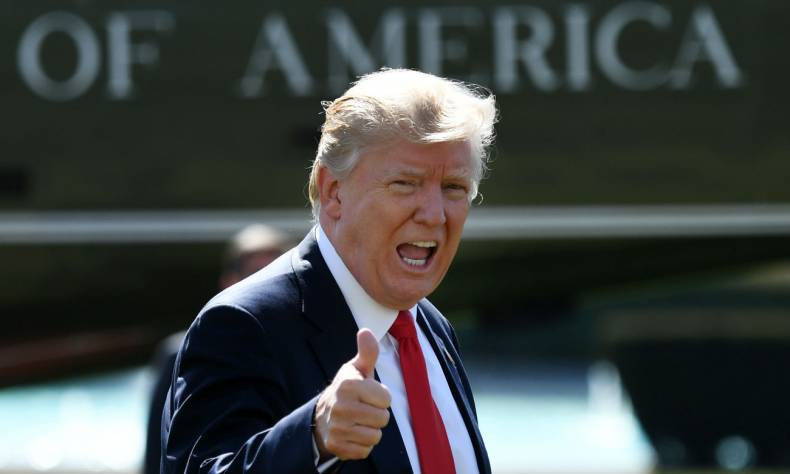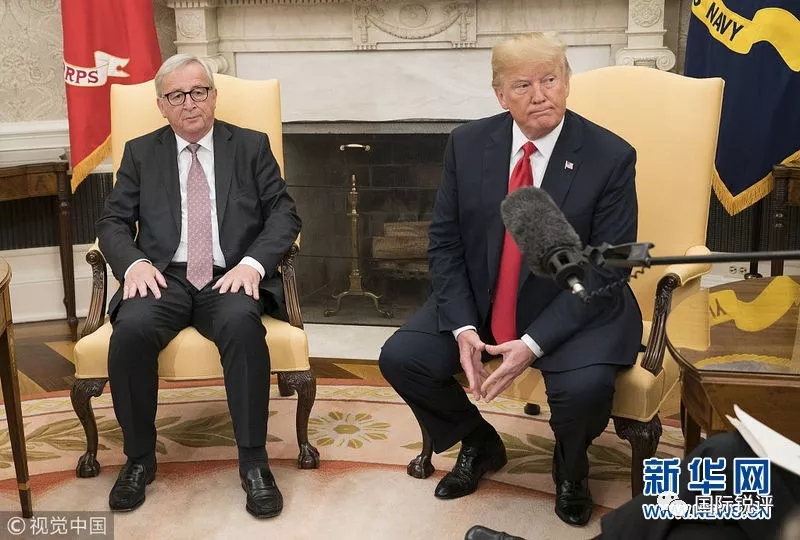
How Many Soybeans Can the Europeans Eat?
A trade deal between the European Union and the U.S. is said to be in the works, causing a temporary relaxation of tensions between the two.
By William Jones
A trade deal between the European Union and the U.S. is said to be in the works, causing a temporary relaxation of tensions between the two.
US Farmers Get Hurt by Trump’s Sanction on China
When President Trump imposed the first sanctions on steel and aluminum imports, targeting China and several other countries including the EU, it was met by an equivalent amount of tariffs by China on U.S. products, including soybeans, an item which are a popular part of every Chinese person’s diet.
U.S. farmers, who have benefited enormously in producing soybeans for the large Chinese market became somewhat frantic, with 60% of U.S. soybean production going to China. With the tariffs eating into their profit margins, many farmers will not be able to make ends meet and will have to stop production.
Trump Loses His People for Soybeans
And if the rural community in the United States, which by and large supported President Trump’s candidacy, turn from him on the basis of the devastation caused by his tariffs, his political future, and the future of the Republican Party would be dim indeed – perhaps even affecting the upcoming November mid-term elections.
The tremendous concern over such an eventuality was reflected in the sudden decision by the President to award the farmers $12 billion in assistance to “tide them over” during the crisis.
If anyone thought the farmers would be relieved at this unforeseen “generosity” from the U.S. government, they were sadly mistaken. This “quick fix” for their momentary problems is no substitute for the disastrous long-term effects of the trade dispute. Even if the trade tariffs were to end within a matter of months, Chinese consumers may well have found elsewhere to purchase their soybeans (as they are now doing with Brazil). Once that market is lost, it will be difficult, if not impossible to revive.
Can EU Make up for the Lost Market?
Most recently, the President has attempted to repair relations with the EU, meeting with EU Commission chairman Jean-Claude Juncker in Washington, thinking perhaps that this would serve as a “buffer” to continue his tariffs on China without facing too much heat from the farmers. The two sides have agreed to attempt to rebalance the trade situation, among other things by Europe buying more soybeans from American farmers.
Δ On July 25, U.S. President Donald Trump met with European commission President Jean-Claude Juncker in Washington
Have we then come closer to a solution for the American farmers? Compare the populations of the EU with the population of China, 741 million versus 1.4 billion. Can one envision that an entity half the size of China, with a population in which the consumption of soy is far less a part of their traditional diet than in China, could in any way make up for Chinese demand? Hardly.
And more importantly, it is not only the quantity, but rather the PRICE of the soybeans which are important. With reduced demand from China, where the Chinese tariff of 25% has virtually priced U.S. soybeans out of the market, even with an additional, albeit smaller demand generated in Europe for the product, the price will still fall from where it has been, leaving farmers in the lurch financially.
And even the ability of Mr. Juncker to convince all the European nations to agree to any agreement remains seriously in doubt. Most European nations have their own farmers to consider – and protect – and some of them grow soybeans.
Sino-US Relation Needs Cooler Heads
And undoubtedly, the tariffs will have a deleterious effect on the Chinese economy as well. So there seem to be no winners in this particular game. While the rhetoric coming out of the White House is still quite strident, there are those in the Trump Administration, as there are in Beijing, who would like to find a way out of this dilemma. And recent press reports indicate that such discussions may be ongoing at this time. It is to be hoped that cooler heads will prevail, hopefully sooner rather than later, when greater damage may be done to both our economies and to the US-China relationship.
While the trade issue has been utilized by the anti-China lobby in Washington in order to target China’s continued high-tech development, this is most probably not President Trump’s ultimate goal. His reversal of the decision on ZTE precisely because he felt it would have too great an effect on the Chinese economy, which infuriated some people in Congress, indicates that perhaps he is more interested with building up the U.S. economy than taking down the Chinese economy. But doing THAT will require changes in the way the U.S. economy operates.
What is the Right Course for US?
The U.S. must move toward creating some form of infrastructure fund for those roads, and highways, and railroads President Trump promised to build.
And government entities like the Export-Import Bank, (which was nearly demolished in the anti-government mood that had dominated the Republican majority in Congress) have to be built up again and expanded in order to promote U.S. exports rather than penalize China for theirs.
And that cornerstone of our engineering capabilities, the National Aeronautics and Space Administration, should be provided with the necessary funding in order to make real progress in further human exploration of the universe, back to the Moon, and beyond.
And maybe in doing this, the U.S. would also find that higher purpose – in which we could eventually collaborate with China in a project that would benefit ALL mankind.
William Jones, is the Washington Bureau Chief for the Executive Intelligence Review, and Non-resident Senior Fellow of Chongyang Institute for Financial Studies, Renmin University of China.
The article reflects the author’s opinion only, not necessarily the view of China Focus’.
 Facebook
Facebook
 Twitter
Twitter
 Linkedin
Linkedin
 Google +
Google +












